
Lakes in the area of Bovanenkovo and Kruzenshternskoye areas (pink outlines) in the Landsat-8 image (a – visible colors, b – infrared synthesis). Picture: Vasily Bogoyavlensky
Space pictures show the blue-tinted lakes formed in depressions caused by thawing permafrost on the Yamal and Gydan peninsulas.
A feature of these thermokarst lakes are craters or funnels in the sediment on the floor through which they are haemorrhaging methane. These pockmarks are similar to those found on the floors of the great oceans.
Scientists say these leaks are year round in lakes where carbon processing and methane emission occur even at temperatures close to zero degrees Celcius. Detailed study of satellite data from 2015-16 has identified more than 200 lakes which are seen as an active source of methane emissions.
The gas is of both a biochemical nature, the result of microbial activity released by permafrost thawing, and catagenesis, formed in deep ground layers.
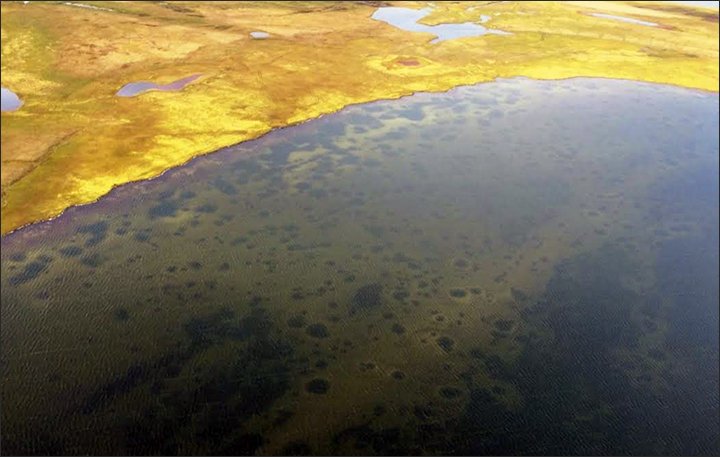
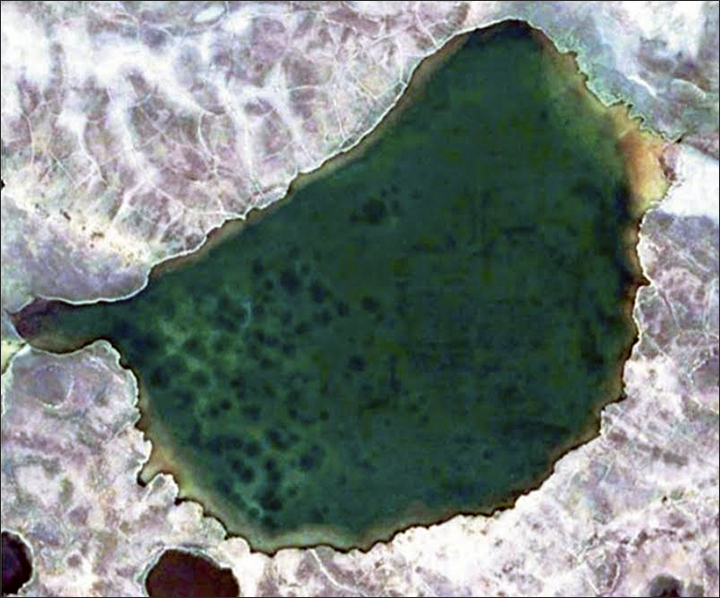
Lake with craters of gas emissions in the north of the Yamal Peninsula, pictured by Vasily Bogoyavlensky in 2015. Satellite image of thermokarst lake with craters of gas emissions to the north of Sabetta, taken on June 24, 2011 from the WorldView-2 satellite.
Professor Vasily Bogoyavlensky, deputy director of the Moscow-based Oil and Gas Research Institute, part of the Russian Academy of Sciences, said: ‘These lakes have a number of features, which can help identify them from a distance: the anomalous blue colour of water, the presence of craters on the bottom and gas seeps in the water, the traces of gas in the seasonal ice cover, as well as active coastal erosion and permafrost swelling near the water’s edge.’
The sulphur in the gas leaks results in algae flourishing in these Arctic waters, which give the lakes their distinctive hue. He warned that ‘many of the sites with gas emissions are located close to the territory of oil and gas deposits’.
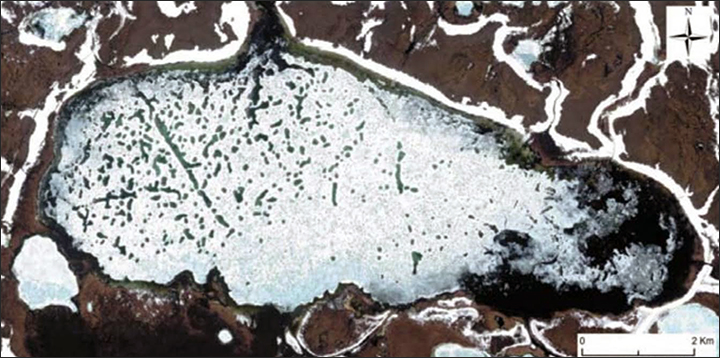
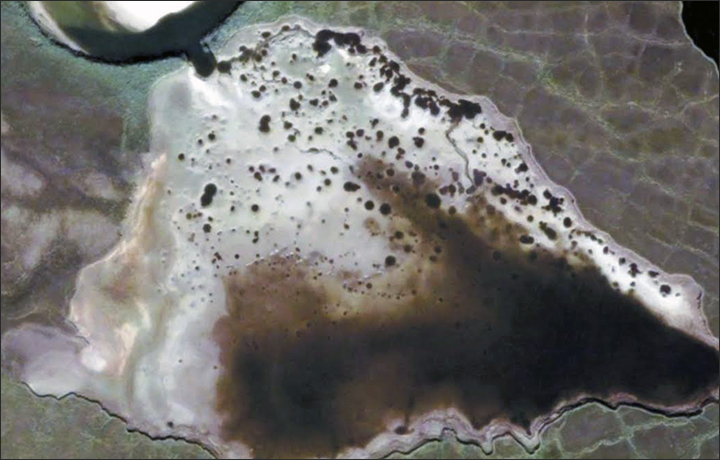
The surface of Lake Hekhekhanto with traces of gas sipes in ice according to WorldView-2, May 29, 2011. Satellite image of partially dried lake with craters of gas emissions in the north of the Yamal Peninsula. Pictures: Vasily Bogoyavlensky
Moreover, he sees an ‘interrelation of gas emissions and seismic activity. ‘For example, over one of the gas deposits (in Yamal), lakes are located along two lines … looking like a giant cross’.
This suggests a ‘genetic connection of craters with deep faults in the earth’s crust, but to confirm we need to conduct thorough seismic research’.
His work in highlighting the lakes with bubbling methane follow revelations this week of several thousand pingos, some of which are filled with gas which could ‘explode’ forming giant craters – as seen in pictures here. At least 10 craters are known about caused by such eruptions.
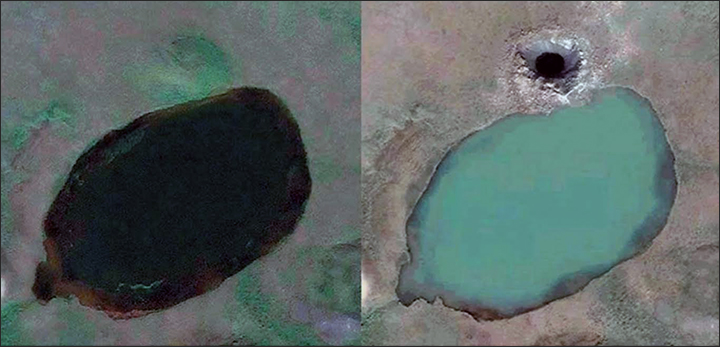
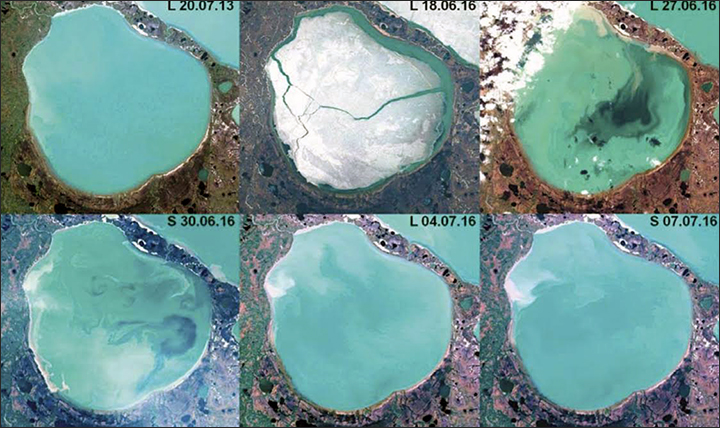
The surface of Lake Hekhekhanto with traces of gas sipes in ice according to WorldView-2, May 29, 2011. Remote monitoring of the water status of Lake Neito from the Landsat-8 (L) and Sentinel-2 (S) satellites. Pictures: Vasily Bogoyavlensky
Scientists say it was wrong to call these pingos ‘gas bubbles’. Nor are all pingos in this region susceptible to explode.
Pingos are dome-shaped mounds over a core of ice, and they can erupt under pressure of methane gas released by the thawing of permafrost caused by climate change.
Alexey Titovsky, director of the Department of Science and Innovation in Yamal-Nenets autonomous region, said: ‘All the pingos revealed in Yamal are now monitored and in the coming summer the scientists will study them more closely.
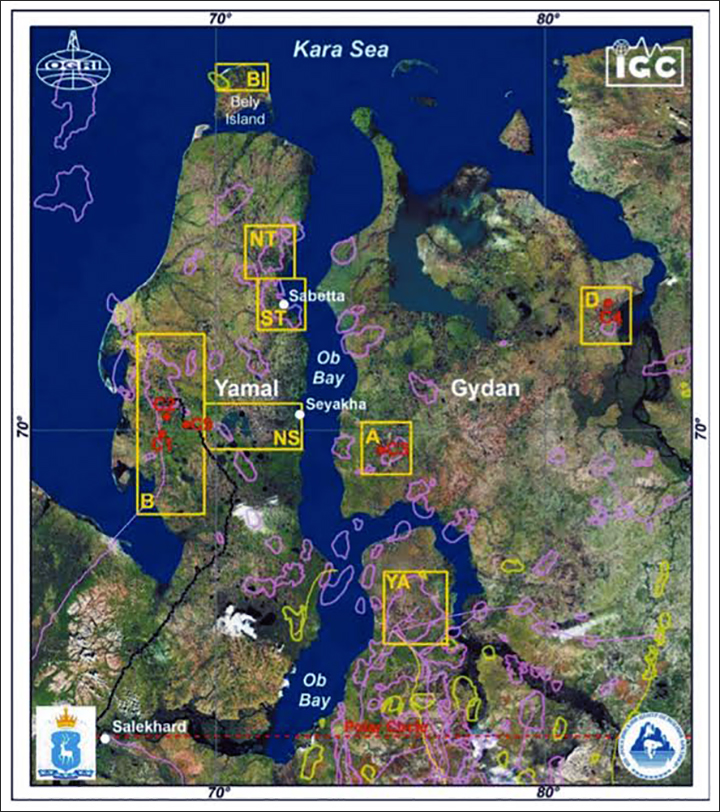
Craters of gas emissions in the South Kara region (C1, C2, C3, C4, C9). Picture: Vasily Bogoyavlensky
‘One of the most important things for us it to understand how they appear, to develop a method of detection of such formations. It is also important to understand what is inside such mounds.
‘There can be gas, water, ice – anything. We need to know precisely in order to make forecast.
‘Sadly the study of the crater that appeared in 2014 near Bovanenkovo does not give us the precise answer as to what exactly was inside the pingo that preceded this crater. When we understand what is inside the pingos, we can predict how dangerous they are.’
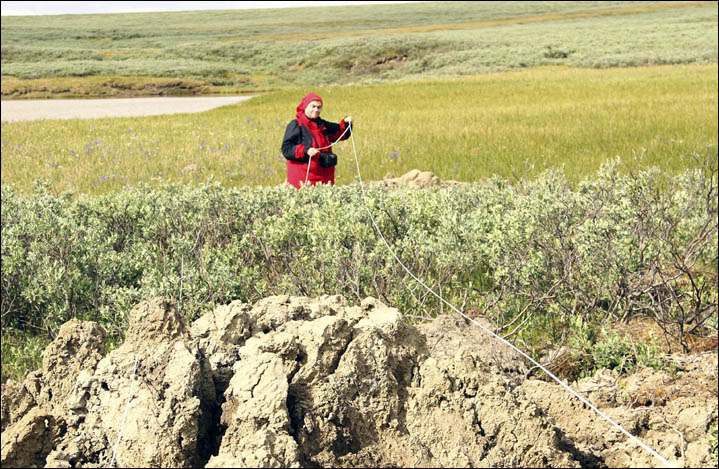
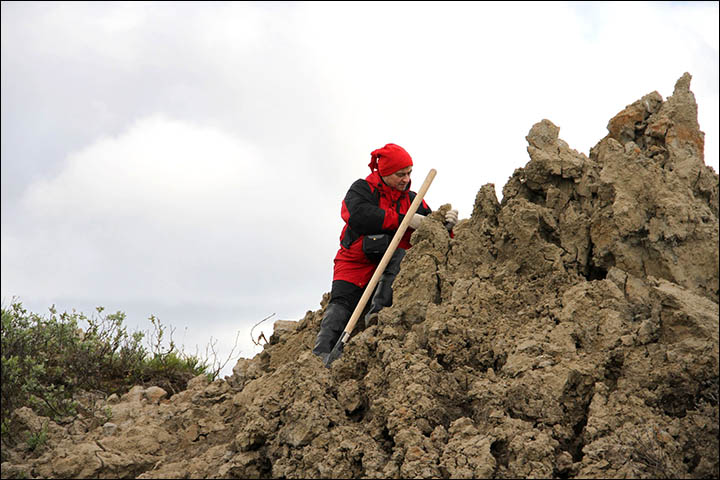
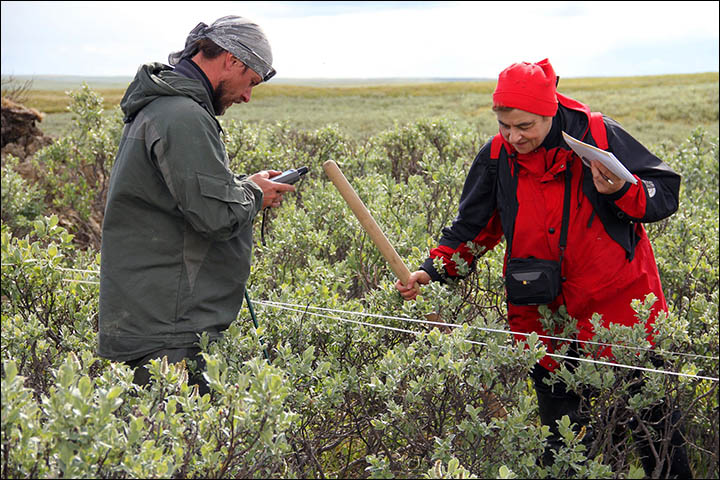
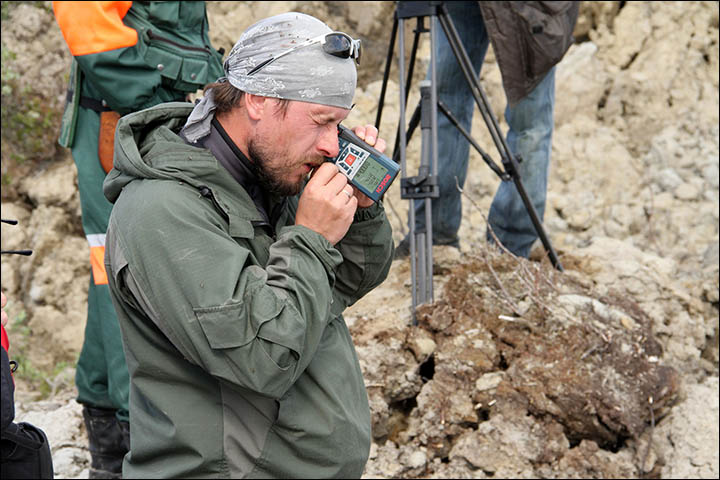
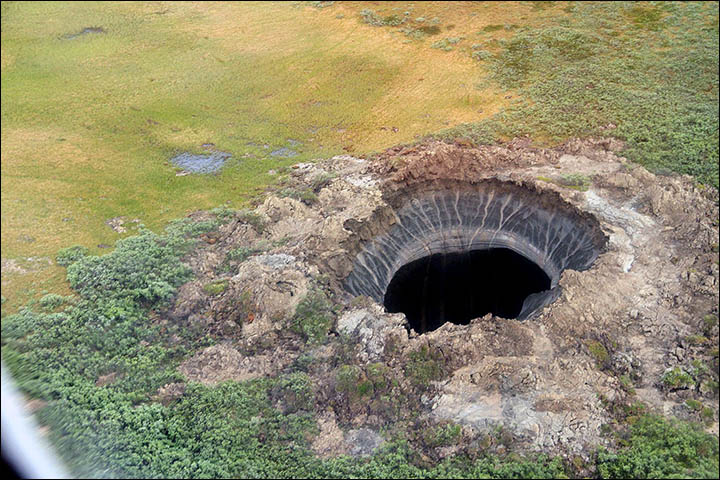
Dr Marina Leibman and Andrey Plekhanov were the first researchers, who checked the giant funnel formed in tundra near Bovanenkovo in 2014. Pictures: Yamal governor’s press-service
Dr Marina Leibman, an expert from the Institute of Earth Cryosphere, Russian Academy of Sciences, said ‘Last year in Yamal there was a very warm summer season.
‘As a result, the expeditions of 2017 will be aimed at assessing the changes associated with this warming. There is a possibility of the activation of these cryogenic processes. Obviously, the area of thermocircuits will increase. The temperature of rocks and the depth of seasonal thawing will increase.’
But the scientists say they ‘refute’ the term ‘underground gas bubbles’. They have never encountered such a natural phenomenon.
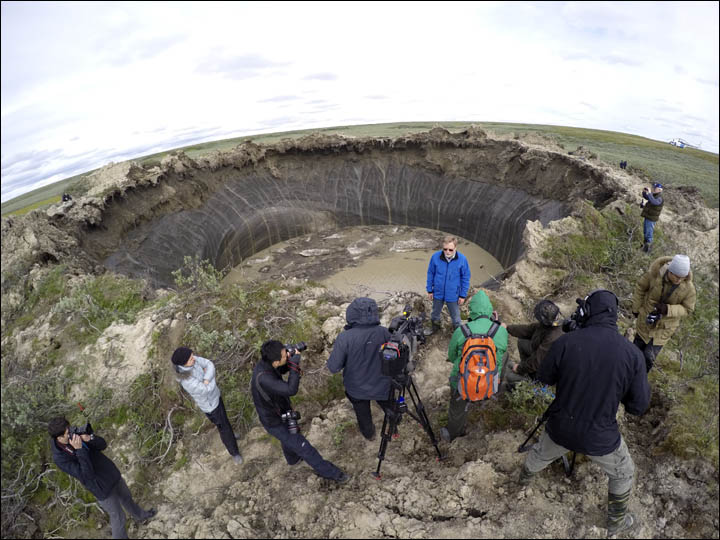
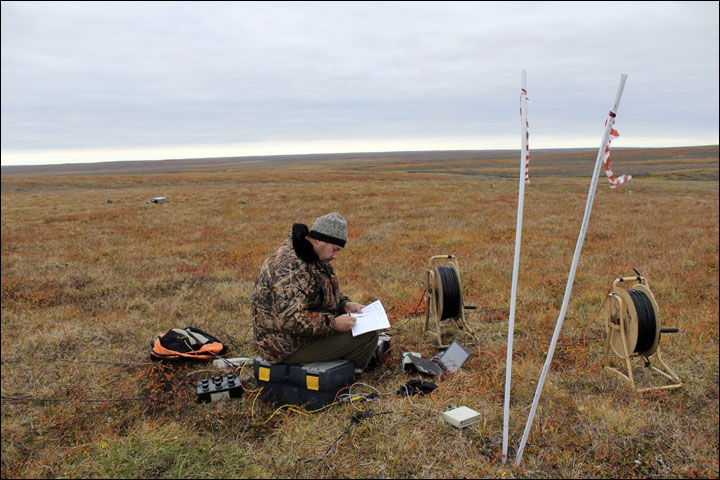
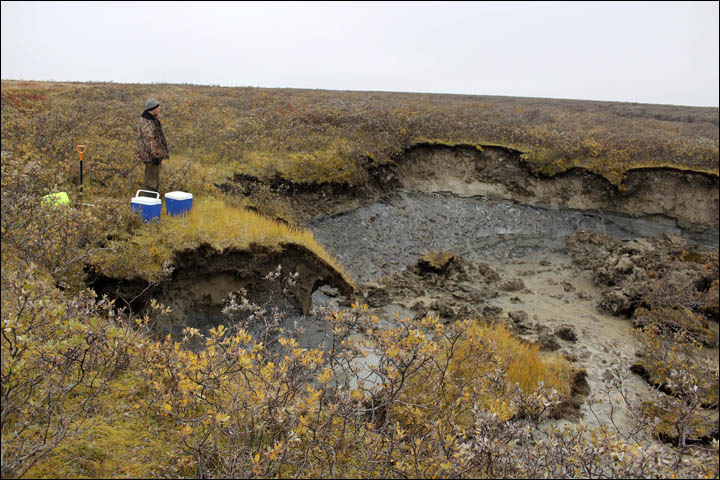
Professor Vasily Bogoyavlensky at the crater of gas emission in July 2015. The research team of Trofimuk Institute of Petroleum Geology and Geophysics at the crater in September 2015. Pictures: Vasily Bogoyavlensky, Vladimir Olenchenko
‘All the cryogenic processes which occur on the peninsula are well studied and have scientific explanations,’ said a statement. ‘All of them are the subject of ongoing scientific monitoring.
‘It should be added that ‘gas bubbles’ is used in common language for another unusual phenomenon, recorded in July 2016 on the Bely Island, when an abnormally hot summer resulted in thawing permafrost and swelling the turf…. Scientists counted only a dozen of such small ‘bubbles’ on the surface.’
Turf is swelling on Bely Island in July 2016.
Ref.: http://siberiantimes.com/science/casestudy/features/discovered-200-plus-arctic-lakes-which-bubble-like-jacuzzis-from-seeping-methane-gas/


